Why Taibai Mountain Should Be Your Next Travel Destination in China
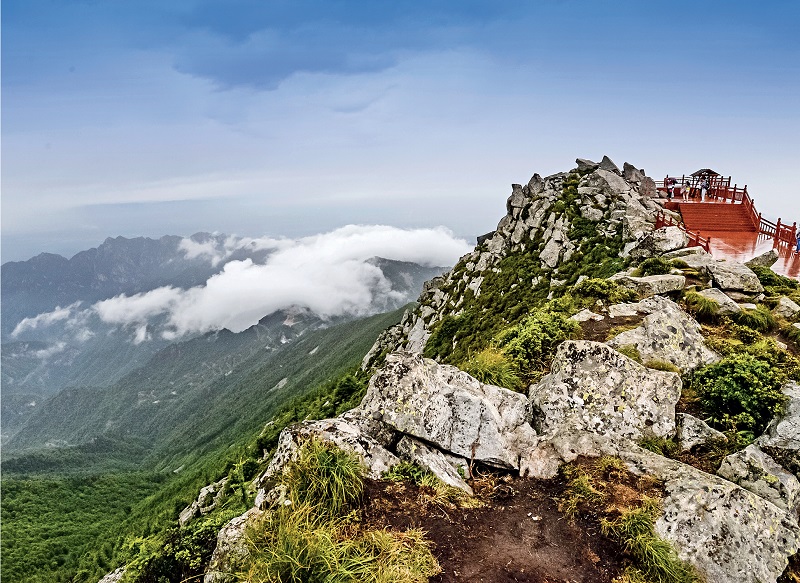
An Essential Guide to Visiting Taibai Mountain Tourism Scenic Area
In This Guide
- An Essential Guide to Visiting Taibai Mountain Tourism Scenic Area
- The Rich History and Legends of Taibai Mountain Tourism Scenic Area
- Main Highlights: What You Absolutely Can’t Miss
- Planning Your Visit: A Practical Guide
- Tickets: Prices, Booking, and Tips
- How to Get There: A Complete Transportation Guide
- Local Cuisine and Accommodation Nearby
- Frequently Asked Questions
- Final Thoughts on Your Trip
Nestled in the heart of Shaanxi Province, Taibai Mountain National Forest Park beckons travelers with its breathtaking natural beauty and rich historical significance. As the highest national forest park in China, it rises majestically as part of the Qinling Mountain Range, offering not just a sanctuary for diverse flora and fauna, but also a canvas of stunning landscapes that have inspired poets and emperors alike throughout Chinese history.
A Glimpse into the Mountain’s Grandeur
With its imposing peak, Immortal Terrace, soaring to 3,767 meters (12,362 feet), Taibai Mountain is often referred to as the “Eternal White Mountain” due to its snow-capped summits and vibrant alpine ecosystems. As you journey through the park, you’ll be captivated by the lush forests, crystalline streams, and unique rock formations that tell tales of eons past. The park is home to over 1,850 species of plants and 1,690 types of insects and animals, including rare creatures like the giant panda and golden monkey, making it a living testament to nature’s diversity.
Rich Historical Tapestry
Beyond its stunning landscapes, Taibai Mountain is steeped in history and culture. It has long been a source of inspiration for some of China’s most revered poets, including Li Bai and Du Fu, who immortalized its beauty in their verses. Ancient temples, stone inscriptions, and historical relics scattered throughout the park provide a glimpse into the reverence the mountain has commanded since the Han Dynasty. Notably, Emperor Xuanzong of the Tang Dynasty famously visited the mountain, leaving behind a legacy that still resonates with visitors today.
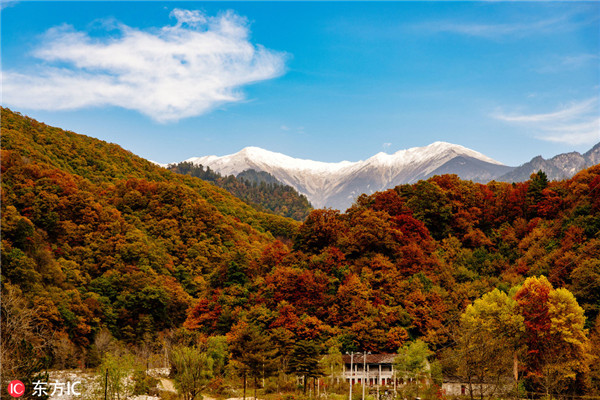
Taibai_Mountain_Tourism_Scenic_Area.
An Adventure Awaits
Whether you are seeking a tranquil escape or an adventurous hike, Taibai Mountain offers an array of activities for every traveler. From serene hot springs that promise rejuvenation to thrilling ropeway rides that treat you to panoramic views, the park is a multi-faceted destination. With well-marked trails winding through its majestic terrain, you can explore at your own pace, immersing yourself in the natural wonders that abound.
As you prepare for your visit to the Taibai Mountain Tourism Scenic Area, allow yourself to be enchanted by the harmony of nature and history that awaits you. This guide will equip you with essential information to make the most of your journey, ensuring that your experience on this magnificent mountain is nothing short of unforgettable.
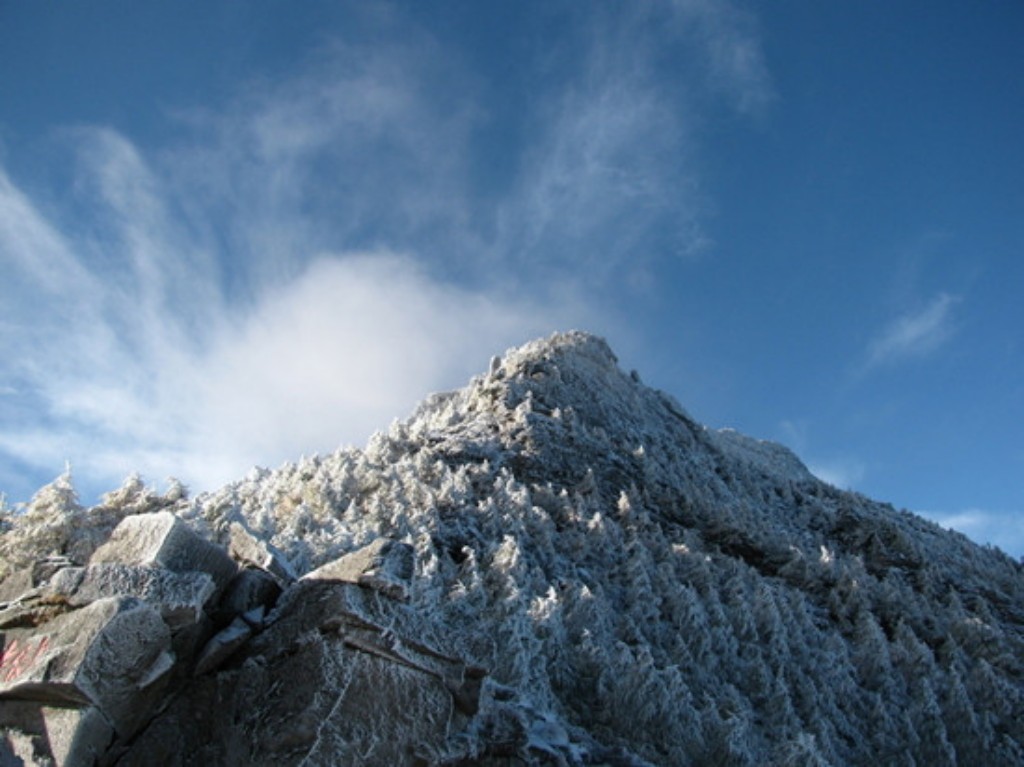
Taibai_Mountain_Tourism_Scenic_Area.
The Rich History and Legends of Taibai Mountain Tourism Scenic Area
A Journey Through Time: The Enigmatic History and Legends of Taibai Mountain
Nestled in the heart of Shaanxi Province, Taibai Mountain stands not only as the highest peak of the Qinling Mountain Range but also as a beacon of rich history and captivating legends. This majestic mountain, with its snow-capped summit often veiled in myth, has long been a source of inspiration for poets, scholars, and emperors alike.
Historical Significance
The history of Taibai Mountain can be traced back to the reign of Emperor Wu of the Western Han Dynasty (206 B.C.-24 A.D.). This era marked the establishment of sacred temples dedicated to immortals, notably the immortal Taibai, revered within the Guchun deity’s pantheon. The mountain’s name, which translates to “too white,” reflects its ethereal beauty, particularly the snow that adorns its peak year-round.
Throughout the ages, Taibai Mountain has been a favored retreat for poets. Esteemed figures such as Li Bai and Du Fu, two of the most illustrious poets of the Tang Dynasty, sought solace in its natural splendor and wrote verses that immortalized their experiences. Their poetry often speaks of the mountain’s tranquil beauty and its profound impact on the human spirit.

Taibai_Mountain_Tourism_Scenic_Area.
Legends That Envelop the Peaks
Various legends abound regarding Taibai Mountain, weaving a rich tapestry of folklore that enhances its allure:
-
The Legend of the Eight Immortals: One of the most enchanting stories associated with Taibai is that of the Eight Immortals, revered figures in Taoist mythology. It is said that they once traversed the mountain, leaving behind traces of their divine presence. The Zhonglu Terrace, a prominent feature on the mountain, is believed to be their resting place, where they would gather to discuss the mysteries of life.
-
Laozi’s Journey: The founder of Taoism, Laozi, is rumored to have once traversed these peaks on an ox, seeking enlightenment. The Blue Ox Cave, named after this fabled journey, stands as a testament to his profound connection to the mountain and its spiritual significance.
-
The Spirit of Venus: According to local lore, the spirit of Venus fell near the main peak of Zhongnan Mountain, which led to the name Taibai. This celestial connection has further enhanced the mountain’s mystical reputation, making it a site of both natural beauty and spiritual significance.

Taibai_Mountain_Tourism_Scenic_Area.
Cultural Relics and Architectural Heritage
Taibai Mountain is not merely a natural wonder; it is also a repository of cultural heritage. Visitors can explore a myriad of ancient structures, including:
-
Temples and Shrines: The forest park is home to 14 ancient temples and numerous shrines that echo the mountain’s spiritual past. Each site tells stories of worship and reverence, connecting visitors with the mountain’s historical significance.
-
Architectural Marvels: The mountain boasts 32 ancient houses, 10 iron tablets, and over 110 iron Buddha statues. These relics offer a glimpse into the artistry and devotion of past civilizations, adding layers of meaning to the hiking experience.
-
Poetic Inspirations: The very paths you tread echo the footsteps of historical figures. The ruins of Tangzicheng, built by Emperor Xuanzong during his famed visit to the Tang Valley, and portions of an ancient plank road used by Sun Simiao, the legendary physician, infuse the landscape with a palpable sense of history.
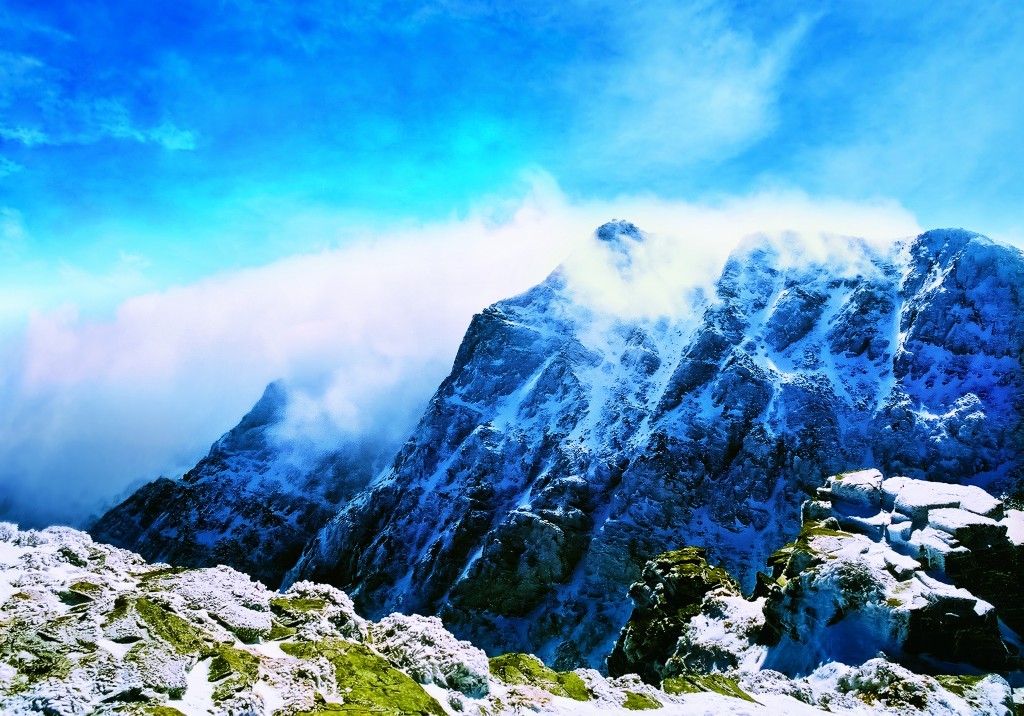
Taibai_Mountain_Tourism_Scenic_Area.
Nature’s Bounty
Beyond its historical and cultural dimensions, Taibai Mountain is also celebrated for its incredible biodiversity. Often referred to as the “Asian Natural Botanical Garden”, the area is home to over 1,850 species of plants and 1,690 species of animals, including rare species such as the giant panda and golden monkey. The varying altitudes create distinct ecological zones, fostering a rich tapestry of flora and fauna that adds to the mountain’s mythical charm.
Conclusion
Visiting Taibai Mountain is akin to stepping into a living museum of history and legend. Each trail, each ancient stone, whispers tales of emperors, poets, and immortals. Whether you are seeking adventure amidst its breathtaking landscapes or a deeper understanding of Chinese culture and history, Taibai Mountain offers an unparalleled experience. Prepare to be enchanted by its stories, both ancient and timeless, as you traverse this majestic landscape.
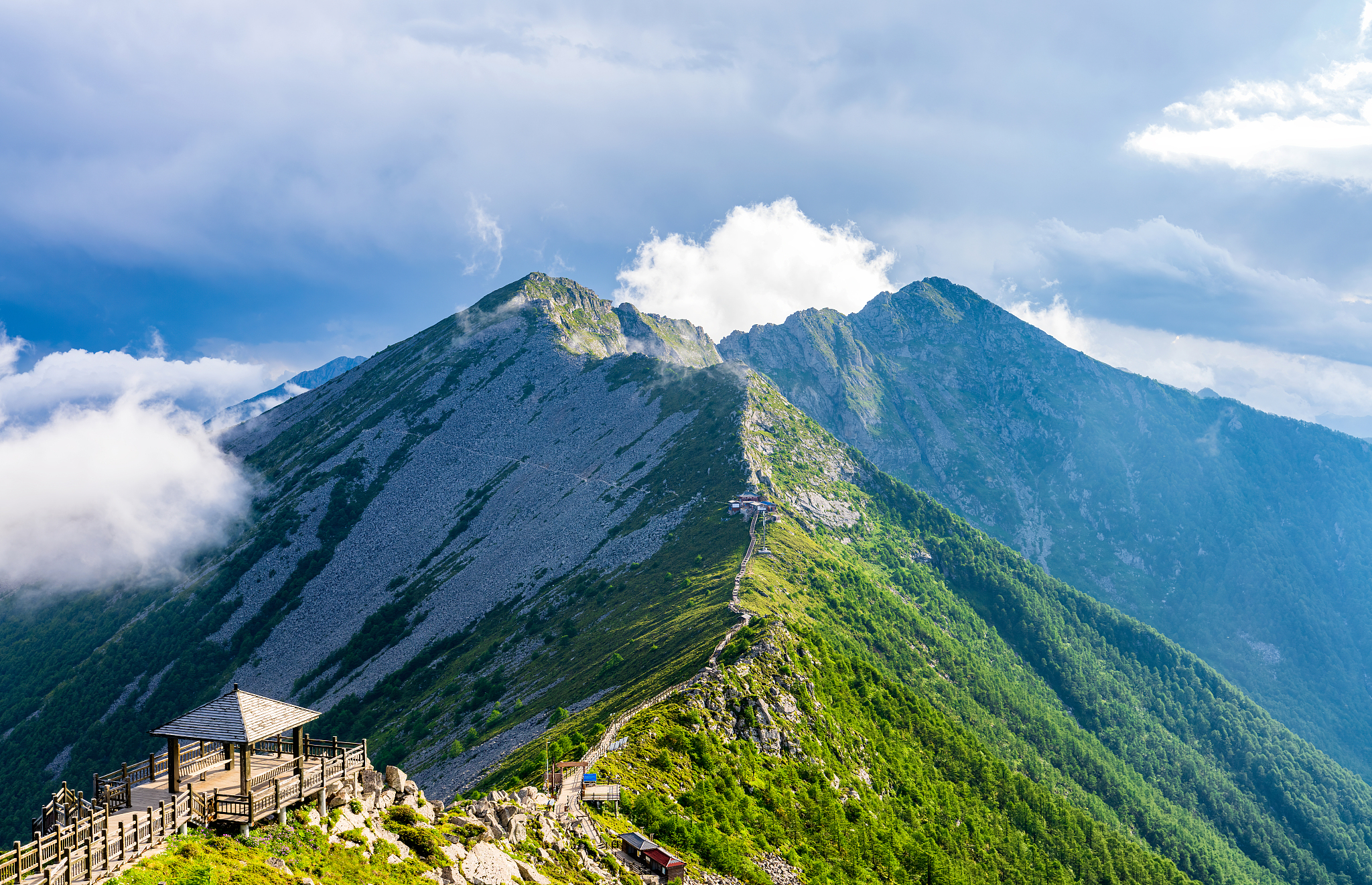
Taibai_Mountain_Tourism_Scenic_Area.
Main Highlights: What You Absolutely Can’t Miss
Main Highlights of Taibai Mountain Tourism Scenic Area
Nestled in the majestic Qinling Mountain Range, the Taibai Mountain National Forest Park is a treasure trove of natural beauty, rich history, and cultural significance. Here are the must-see highlights that you absolutely cannot miss during your visit.
1. Breathtaking Natural Landscapes
The park boasts a stunning variety of landscapes, from lush forests to dramatic rock formations. With elevations ranging from 630 meters to 3,767 meters, you’ll encounter diverse flora and fauna that change with altitude.
- Unique Geological Features: Explore the park’s distinctive rock formations, including the “Cave of Guiguzi” and the “Blue Ox Cave,” which are steeped in myth and legend.
- Alpine Lakes: Don’t miss the serene Jade Emperor Pools, four pristine lakes that reflect the breathtaking mountain scenery.
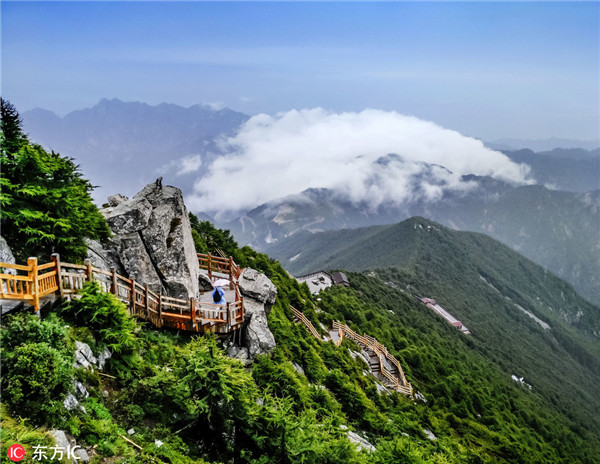
Taibai_Mountain_Tourism_Scenic_Area.
2. Rich Biodiversity
Known as the “Asian Natural Botanical Garden,” Taibai Mountain is home to over 1,850 species of plants and 1,690 animal species.
- Rare Wildlife: Keep an eye out for rare creatures, including the giant panda and golden monkey, which roam these diverse ecosystems.
- Medicinal Plants: The park is a haven for herbalists, with over 510 species of medicinal plants that thrive in its varied climates.
3. Historical Significance
Taibai Mountain has long been revered in Chinese culture, attracting poets and emperors alike.

Taibai_Mountain_Tourism_Scenic_Area.
- Cultural Relics: Discover ancient temples and structures, including 14 sites of temples and numerous statues and carvings that tell stories of the past.
- Poetic Inspiration: Follow in the footsteps of legendary poets like Li Bai and Du Fu, who found inspiration in these majestic landscapes. Their poems can be found etched in stone throughout the park.
4. Relaxing Hot Springs
At the base of the mountain, indulge in the natural hot springs known for their therapeutic properties.
- Healing Waters: With temperatures reaching 72°C, these mineral-rich springs are perfect for relaxation and rejuvenation after a day of hiking.
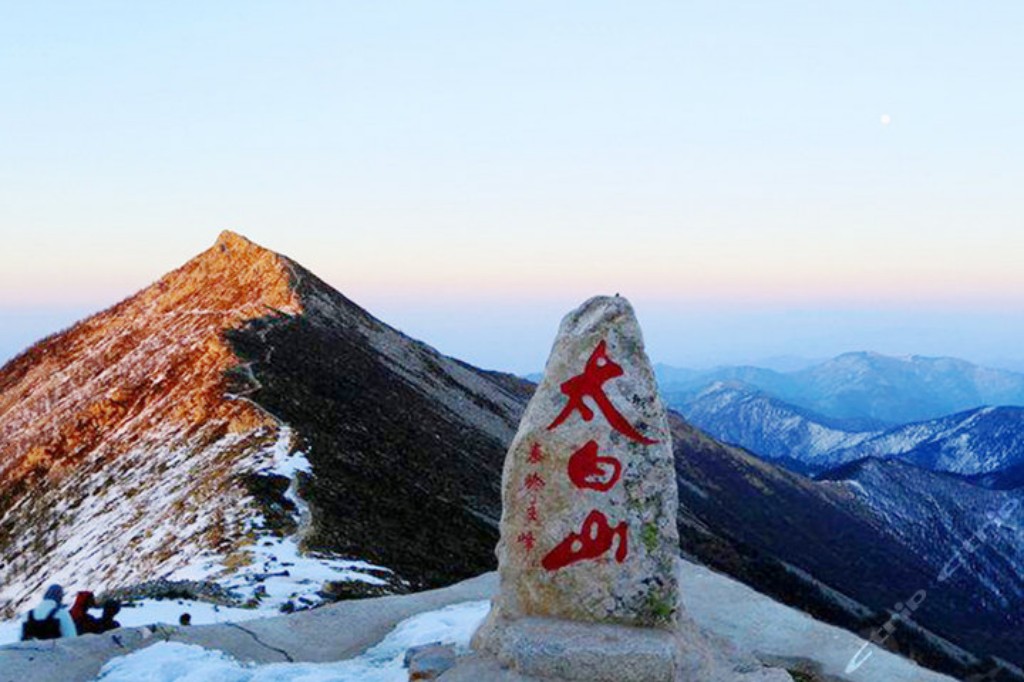
Taibai_Mountain_Tourism_Scenic_Area.
5. Adventurous Hiking Trails
For the adventurous traveler, Taibai Mountain offers a range of hiking trails that cater to all skill levels.
- Scenic Routes: The trails provide stunning views of the surrounding landscapes and lead to significant landmarks such as the Immortal Terrace, the highest peak in the region.
- Ropeway Experience: For a unique perspective, ride the Tianxia Ropeway, which takes you high above the ground, offering panoramic views of glacier relics and a sea of clouds.
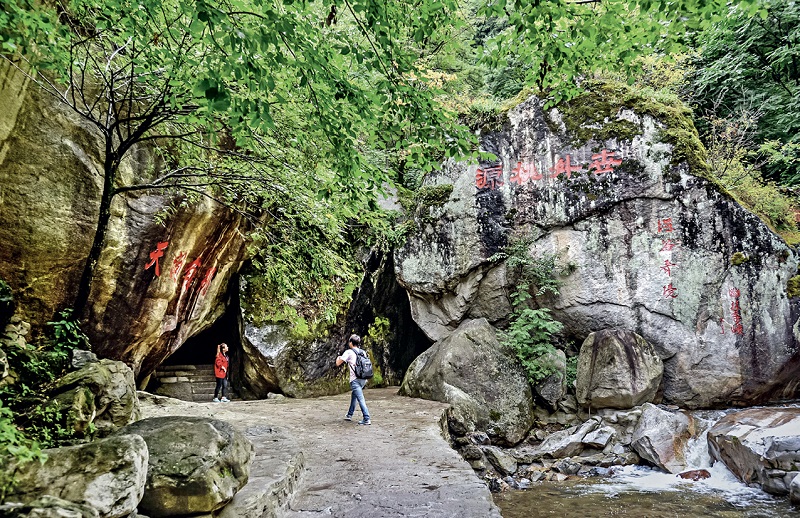
Taibai_Mountain_Tourism_Scenic_Area.
6. Accessibility and Visitor Information
Getting to Taibai Mountain is convenient, with regular bus services from Xi’an and Baoji. The park is open year-round, but the best time to visit is during the summer months (July and August), when the weather is mild, though don’t forget to pack a light jacket for the cooler mountain air.
- Admission Fees: Entry is approximately CNY 90 during peak season and CNY 54 in winter months. Additional fees apply for the ropeway and shuttle services.
- Recommended Duration: Plan to spend at least 1-2 days to fully explore the park and its surroundings.

Taibai_Mountain_Tourism_Scenic_Area.
Conclusion
Whether you’re seeking adventure, tranquility, or a glimpse into China’s rich cultural tapestry, the Taibai Mountain National Forest Park is an unforgettable destination. From its awe-inspiring natural beauty to its deep historical roots, it promises a journey that resonates with the heart and soul of China.
Planning Your Visit: A Practical Guide
Your Essential Guide to Visiting Taibai Mountain National Forest Park
Embarking on a journey to Taibai Mountain National Forest Park offers international travelers a unique blend of breathtaking natural beauty, rich cultural heritage, and a chance to explore one of China’s most significant mountain ranges. Nestled in Shaanxi Province, this stunning destination is not only a haven for nature lovers but also a historical treasure trove that echoes the poetic musings of ancient scholars. Here’s how to plan your visit effectively:

Taibai_Mountain_Tourism_Scenic_Area.
Getting There
From Xi’an:
- Tour Bus:
- Depart from Xi’an Bus Station (near the Xi’an Railway Station).
- Buses run from 08:00 to 18:00.
-
Fare: Approximately CNY 37.5 per person.
-
Regular Bus:
- Take a bus to Meixian County from Xi’an West Bus Station.
- Fare: About CNY 37 per person.
- Upon arrival, transfer to bus No. 203 to reach the park (costing about CNY 4).
From Baoji:
- Tour Bus:
- Available at Baoji West Bus Station.
-
Fare: Approximately CNY 29 per person.
-
Regular Bus:
- Buses to Meixian County run every 30 minutes from Baoji Passenger Station.
- Fare: About CNY 23 per person, followed by a transfer to bus No. 203.
Getting Around
Once at the park, shuttle buses operate between Tangyukou and Xiabansi, facilitating easy movement between scenic spots.
Admission and Opening Hours
- Entrance Fee:
- March to November: CNY 90
- December to February: CNY 54
-
Children under 1.2 m (3.9 ft): Free
-
Ropeway Fees:
- Tianxia Ropeway: CNY 130 (one way uphill), CNY 100 (one way downhill).
-
Fuyunge Ropeway: CNY 90 (round trip), CNY 50 (one way).
-
Shuttle Bus Cost: CNY 60 (round trip).
-
Opening Hours:
- March to November: 07:30 – 16:00
- December to February: 08:00 – 16:00
Best Time to Visit
The ideal months for visiting Taibai Mountain are July and August when the weather is relatively mild. However, do pack a cotton coat and rain gear, as conditions can change rapidly in mountainous areas.
What to See and Do
- Natural Wonders:
- Marvel at diverse flora and fauna, with over 1,850 species of plants and 1,690 animals, including rare species like pandas and golden monkeys.
-
Enjoy the stunning landscapes, featuring unique rock formations and serene lakes.
-
Historical Sites:
- Explore ancient temples, stone tablets, and architecture that reflect the cultural significance of the area.
-
Discover the poetic heritage of famous Tang Dynasty poets who found inspiration in these landscapes.
-
Adventure Activities:
- Hiking trails offer stunning views and opportunities to experience the local ecosystem.
-
The Tianxia Ropeway provides a thrilling ride with panoramic views of glacier relics and clouds.
-
Relaxation:
- Unwind at the natural hot springs, which are renowned for their healing properties—ideal after a day of exploration.
Nearby Attractions
Consider extending your journey to visit other notable sites in the region, such as:
- Heihe National Forest Park
- Louguantai
- Xianyou Temple Museum
- Qinling Mausoleum
Tips for a Successful Visit
- Stay Hydrated: Bring plenty of water, especially if you plan to hike.
- Wear Appropriate Footwear: Sturdy hiking boots are essential for navigating the rugged terrain.
- Respect Nature: Follow park guidelines to preserve the stunning landscapes and wildlife.
By following this guide, you’ll ensure a fulfilling and memorable experience at Taibai Mountain National Forest Park. Whether you seek adventure, relaxation, or a glimpse into China’s rich history, this remarkable destination promises to leave an indelible mark on your journey.
Tickets: Prices, Booking, and Tips
Exploring Ticketing and Travel Tips for Taibai Mountain National Forest Park
Visiting the majestic Taibai Mountain National Forest Park is an experience that immerses you in breathtaking natural beauty and rich historical significance. To ensure a smooth journey, here’s a comprehensive guide on ticket prices, booking options, and essential travel tips for your visit.
Admission Fees
Standard Entry Prices:
– March – November: CNY 90 per person
– December – February: CNY 54 per person
– Children: Free entry for those under 1.2 meters (3.9 feet) tall
Additional Attractions:
– Tianxia Ropeway:
– CNY 130 for a single uphill trip
– CNY 100 for a single downhill trip
– Fuyunge Ropeway:
– CNY 90 for a round-trip
– CNY 50 for a one-way trip
– Shuttle Bus (within the park): CNY 60 for a round-trip
Opening Hours
- March – November: 07:30 – 16:00
- December – February: 08:00 – 16:00
Booking and Transportation Tips
How to Get There:
1. From Xi’an:
– Tour Bus: Depart from Xi’an Bus Station (near Xi’an Railway Station). Buses run from 08:00 to 18:00, costing approximately CNY 37.5 per person.
– Regular Bus: Take a bus to Meixian County from Xi’an West Bus Station, with a fare of about CNY 37. After reaching Meixian, transfer to bus No. 203 to reach the park for an additional CNY 4.
- From Baoji:
- Tour Bus: Buses to Mount Taibai depart from Baoji West Bus Station, costing around CNY 29 per person.
- Regular Bus: Buses to Meixian County leave every 30 minutes from Baoji Passenger Station, costing about CNY 23. Again, transfer to bus No. 203 for the final leg of your journey.
Getting Around the Park:
– A shuttle bus service operates between Tangyukou and Xiabansi, making it easy to explore the park’s diverse attractions.
Travel Tips
- Best Time to Visit: The ideal months to experience Taibai Mountain are July and August, when the weather is milder. However, pack a cotton coat and rain gear, as temperatures can drop, and rain is possible.
- Ropeway Experience: Consider taking the ropeway to enjoy stunning views of the glacier relics and sea of clouds—an unforgettable aspect of your journey.
- Plan Your Day: Allocate at least 1-2 days to fully immerse yourself in the park’s natural landscapes and historical sites. With over 180 attractions, including ancient temples and unique rock formations, there’s much to explore.
By following these guidelines, you can ensure a memorable trip to Taibai Mountain National Forest Park, a true gem of China’s natural and cultural heritage. Whether you are drawn by the striking scenery or the historical significance, this destination promises an enriching experience for every traveler.
How to Get There: A Complete Transportation Guide
Your Path to Taibai Mountain National Forest Park
Taibai Mountain National Forest Park, a stunning natural treasure nestled in the Qinling Mountain Range, is a must-visit for those seeking both adventure and tranquility. This complete transportation guide will help you navigate your way to this remarkable destination, whether you’re coming from the historic city of Xi’an or the nearby city of Baoji.
Getting There
From Xi’an:
- Tour Bus:
- Departure Point: Xi’an Bus Station (opposite Xi’an Railway Station)
- Frequency: Buses run daily from 08:00 to 18:00
- Duration: Approximately 2 to 2.5 hours
-
Cost: Around CNY 37.5 per person
-
Regular Bus:
- Departure Point: Xi’an West Bus Station
- Route: Take a bus to Meixian County.
- Transfer: Upon reaching Meixian, transfer to bus No. 203 for Taibai Mountain.
- Cost:
- Xi’an to Meixian: Approximately CNY 37
- Meixian to Taibai Mountain: Approximately CNY 4
From Baoji:
- Tour Bus:
- Departure Point: Baoji West Bus Station
-
Cost: Approximately CNY 29 per person
-
Regular Bus:
- Departure Point: Baoji Passenger Station
- Frequency: Every 30 minutes to Meixian County
- Transfer: After reaching Meixian, take bus No. 203 to Taibai Mountain.
- Cost:
- Baoji to Meixian: Approximately CNY 23
- Meixian to Taibai Mountain: Approximately CNY 4
Getting Around the Park
Once inside Taibai Mountain National Forest Park, exploring its vast beauty is made easy with the shuttle bus services that connect key areas within the park. The shuttle buses operate between Tangyukou and Xiabansi, providing a convenient way to access scenic spots without the need for extensive walking.
Admission Fees
- March to November: CNY 90 per person
- December to February: CNY 54 per person
- Children under 1.2 m (3.9 ft): Free of charge
Ropeway Fees:
– Tianxia Ropeway:
– CNY 130 for a single uphill trip
– CNY 100 for a single downhill trip
– Fuyunge Ropeway:
– CNY 90 for a round-trip
– CNY 50 for one way
– Shuttle Bus: CNY 60 for a round-trip
Opening Hours
- March to November: 07:30 to 16:00
- December to February: 08:00 to 16:00
Recommended Transportation Tips
- Plan Ahead: Given the rural nature of the area, it’s wise to check bus schedules in advance, especially during peak tourist seasons.
- Weather Preparedness: The climate can change rapidly in the mountains. Dress in layers and carry rain gear, even in summer.
- Local Currency: Ensure you have enough local currency (CNY) for bus fares and entrance fees, as not all places accept credit cards.
By following this transportation guide, you’ll be well on your way to experiencing the breathtaking landscapes and rich cultural heritage of Taibai Mountain National Forest Park. Enjoy your journey!
Local Cuisine and Accommodation Nearby
When exploring the breathtaking Taibai Mountain National Forest Park, indulging in the local cuisine and finding the right accommodations are essential components of your travel experience. Here’s a guide to savoring the flavors of the region and resting comfortably after a day of adventure.
Local Cuisine
1. Traditional Shaanxi Noodles (Biang Biang Mian)
A culinary highlight of Shaanxi Province, Biang Biang Mian is a must-try for any traveler. This dish features wide, hand-pulled noodles served with a generous helping of chili oil, garlic, and various toppings such as vegetables and meats. The unique texture and flavor make it a local favorite that reflects the region’s hearty culinary tradition.
2. Yangrou Paomo (Lamb Soup with Bread)
A comforting dish perfect for warming up after a day of hiking, Yangrou Paomo consists of a rich lamb broth served with pieces of flatbread. Diners often break the bread into the soup, allowing it to soak up the savory flavors. Pair it with pickled garlic and chili oil for an authentic taste experience.
3. Roujiamo (Chinese Hamburger)
Often dubbed the “Chinese hamburger,” this street food delight features minced meat, typically lamb or pork, sandwiched between flatbreads. It’s convenient for travelers on the go, making it an ideal snack as you explore the scenic areas of the park.
4. Hot Springs Cuisine
After a day of hiking, consider dining at a local hot spring resort where you can enjoy dishes made with fresh, local ingredients. Many hot spring restaurants offer meals cooked in the mineral-rich waters, enhancing the flavors and providing a unique dining experience.
Accommodation Options
1. Taibai Mountain Resort Hotel
Situated at the foot of Taibai Mountain, this resort offers comfortable accommodations with stunning views. With modern amenities and access to scenic spots, it’s an excellent choice for travelers looking to unwind after exploring the park. The hotel also features a restaurant serving local cuisine.
2. Meixian Hotel
Located in the nearby Meixian County, this hotel provides a cozy atmosphere with easy access to transportation to the park. Guests can enjoy traditional Shaanxi breakfast and relax in well-appointed rooms. It’s an ideal base for those planning longer stays.
3. Hot Springs Retreats
For a unique experience, consider staying at one of the hot springs resorts near Taibai Mountain. These accommodations often feature spa facilities and thermal baths, allowing you to rejuvenate your body after outdoor activities. Many resorts also offer guided tours and local dining options.
4. Guesthouses and Homestays
If you’re looking for a more intimate experience, consider staying at local guesthouses or homestays. These options provide a chance to immerse yourself in the local culture, often with home-cooked meals and personalized hospitality. Look for places that highlight traditional Shaanxi dishes for an authentic stay.
Final Tips
When planning your trip, try to visit local markets and street stalls to sample regional specialties and experience the vibrant food culture. Additionally, during peak seasons (July and August), it’s advisable to book accommodations in advance to secure your stay in this beautiful area. Enjoy your culinary journey and restful nights at Taibai Mountain!
Frequently Asked Questions
Frequently Asked Questions about Taibai Mountain Tourism Scenic Area
1. What is the best time to visit Taibai Mountain?
The ideal months to visit Taibai Mountain are July and August when the weather is generally pleasant. However, it’s wise to bring a cotton coat and rain gear, as temperatures can fluctuate, and rain can occur unexpectedly.
2. How do I get to Taibai Mountain from Xi’an?
To reach Taibai Mountain from Xi’an, you have several options:
– Tour Bus: Take a tour bus from Xi’an Bus Station, which operates from 08:00 to 18:00. The fare is approximately CNY 37.5.
– Public Bus: Alternatively, take a regular bus to Meixian County from Xi’an West Bus Station (costing around CNY 37) and then transfer to bus No. 203 to reach the mountain.
3. What is the entrance fee for Taibai Mountain National Forest Park?
The entrance fee varies by season:
– March to November: CNY 90
– December to February: CNY 54
Children under 1.2 meters (3.9 feet) in height can enter for free.
4. Are there any hiking trails available?
Yes, Taibai Mountain offers numerous hiking trails that cater to various skill levels. The trails are surrounded by stunning natural landscapes, including unique rock formations, vibrant flora, and diverse fauna. Make sure to wear appropriate footwear and bring plenty of water.
5. What are some notable attractions within the park?
Taibai Mountain National Forest Park is home to over 180 attractions, including:
– Alpine Lakes: Four beautiful lakes known as the Pool of Jade Emperor.
– Caves and Rock Formations: Unique geological formations like the Cave of Guiguzi and Blue Ox Cave.
– Historic Sites: Ancient temples, relics from the Tang Dynasty, and remnants of historic roads.
6. Can I enjoy hot springs at Taibai Mountain?
Absolutely! The park features natural hot springs with therapeutic properties. The hot spring at the entrance has a temperature of around 60°C and is known for its health benefits, making it a perfect spot to relax after a day of exploring.
7. What wildlife can I expect to see?
Taibai Mountain is often referred to as a “Natural Zoo of China.” Visitors may encounter over 1,690 species of animals, including rare species such as giant pandas and golden monkeys. Birdwatchers will also delight in observing more than 230 kinds of birds.
8. What facilities are available for visitors?
The park is well-equipped with various facilities, including:
– Ropeways: For stunning views and easier access to high-altitude areas.
– Shuttle Buses: To help you navigate between different scenic spots within the park.
– Rest Areas: Providing comfort and amenities for visitors to relax during their exploration.
Feel free to reach out if you have any more questions about your visit to Taibai Mountain National Forest Park!
Final Thoughts on Your Trip
As you prepare to conclude your journey through the breathtaking Taibai Mountain Tourism Scenic Area, take a moment to reflect on the myriad experiences this enchanting realm has offered. From its towering, snow-clad peaks that pierce the sky to the lush, verdant valleys teeming with diverse flora and fauna, Taibai Mountain serves as a stunning testament to the natural beauty and historical richness of China.
A Journey Through Nature and History
Your adventure here has likely been marked by invigorating hikes along winding trails, where each turn reveals unique rock formations and the soothing sounds of gurgling streams. The forest park, often referred to as the “Asian Natural Botanical Garden,” invites you to explore its rich ecosystems, home to rare species like the giant panda and golden monkey. This incredible biodiversity provides a glimpse into China’s natural heritage, making it a must-visit for any nature enthusiast.
Yet, the allure of Taibai Mountain extends beyond its scenic vistas. The echoes of ancient poets such as Li Bai and Du Fu resonate within its historic sites, reminding you of the profound cultural significance this mountain has held through the ages. Each temple, stone tablet, and ancient house tells a story, weaving together the threads of history and mythology that define this remarkable landscape.
Practical Reflections for Future Travelers
As you prepare to leave, consider the best times to revisit. The vibrant summer months of July and August are ideal for exploration, but don’t forget to pack a cotton coat and rain gear, as the weather can shift unpredictably in the mountains. Should you choose to return, the ropeway offers a breathtaking ascent, allowing you to witness the marvels of glacier relics and the ethereal sea of clouds from above.
In conclusion, your visit to the Taibai Mountain Tourism Scenic Area has not only been a feast for the eyes but also a journey through the heart of Chinese history and culture. Whether you found solace in nature, delved into the rich tapestry of its past, or simply basked in the tranquility of your surroundings, Taibai Mountain promises to leave an indelible mark on your travel memories. Embrace the stories you’ve gathered and let them inspire your future